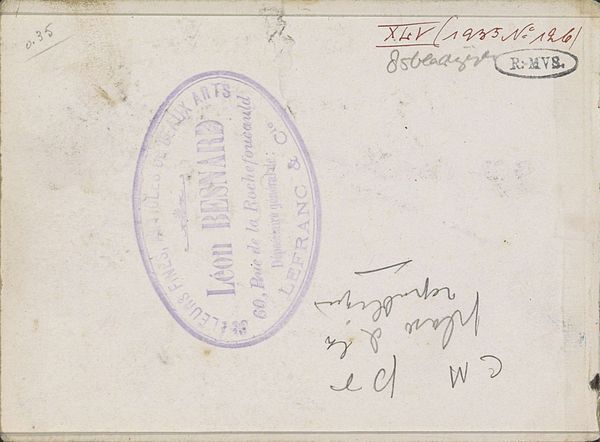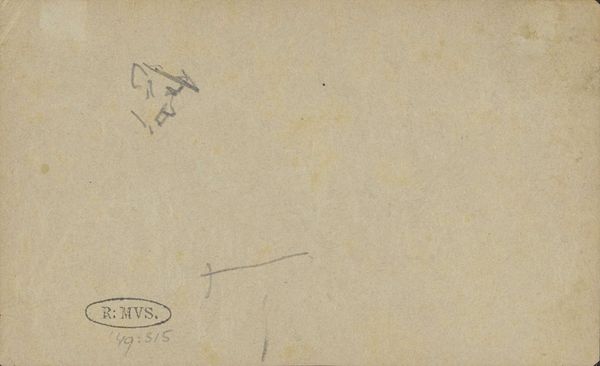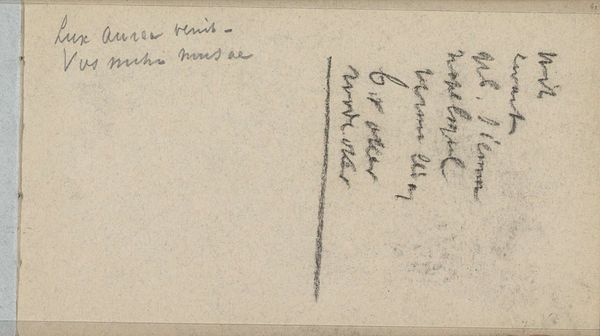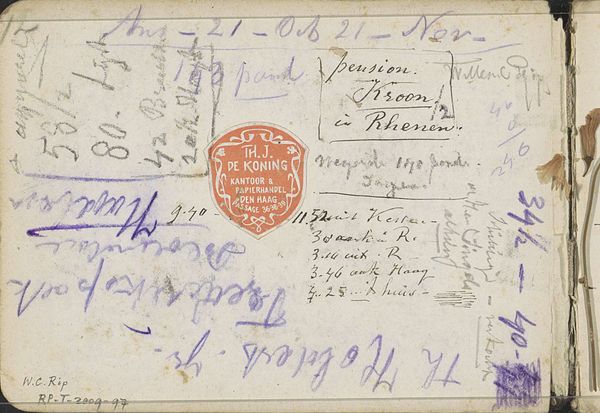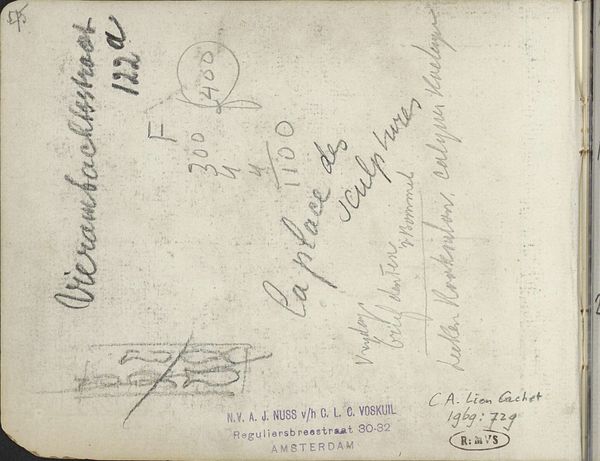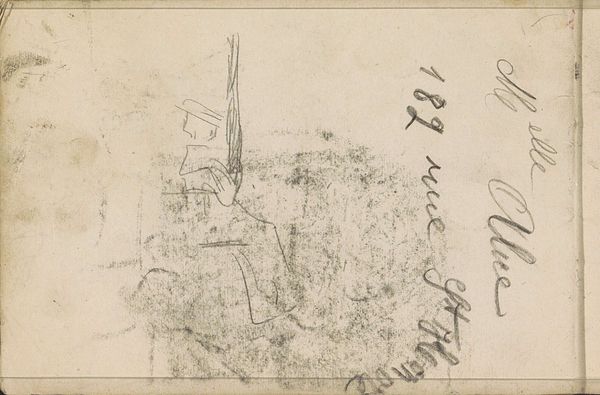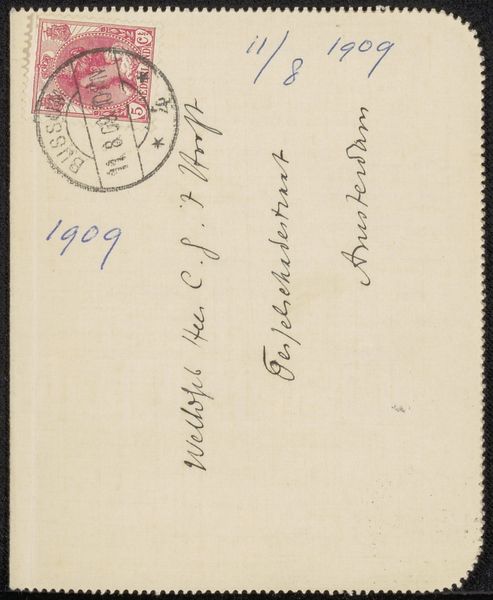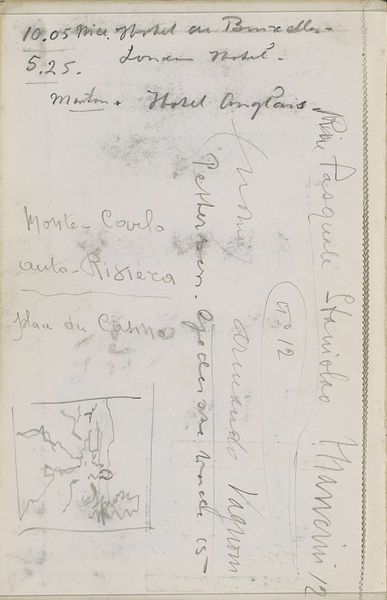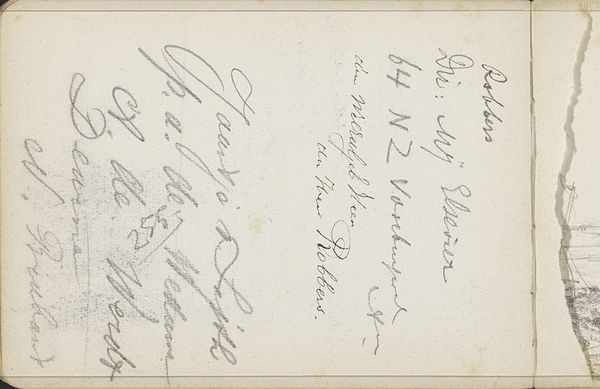
drawing, paper, pencil
#
drawing
#
landscape
#
paper
#
pencil
#
watercolor
Copyright: Rijks Museum: Open Domain
Editor: So this is Willem Cornelis Rip's "Landschap," sometime between 1866 and 1922. It’s a pencil drawing on paper. It's more like a sketch really. The jottings next to it suggest a personal document. What sort of meanings do you think can be drawn from this work? Curator: Indeed, a fascinating confluence of personal notes and landscape imagery. I am struck by how the handwritten notations almost compete with the drawn landscape. There’s a palimpsest effect, where layers of personal data obscure and inform the image. What visual or textual clues tell you this is landscape at all? Editor: Well, the trees mostly. Even though they’re sketched roughly, they evoke a sense of place and nature. But it's dominated by text. Are you saying the written text adds to the symbolism? Curator: Absolutely. Note the business stamp, "Th.J. de Koning, Kantoor & Papierhandel Den Haag." Consider how that anchors this personal scene to a specific time and place – The Hague, a stationers shop. Does it perhaps speak to a relationship between nature, documentation and perhaps, the professional life of the artist? Editor: So the drawing, combined with the handwritten notes and the business stamp, becomes more than just a landscape study? Curator: Precisely! These disparate elements invite a deeper reflection on memory, place, and the subtle ways our lives intersect with the world around us. It allows us to weave a cultural narrative around what appears to be a casual sketch. Editor: It’s amazing how much a seemingly simple sketch can reveal! Curator: Exactly, the symbolic power of visual fragments should never be underestimated.
Comments
No comments
Be the first to comment and join the conversation on the ultimate creative platform.
